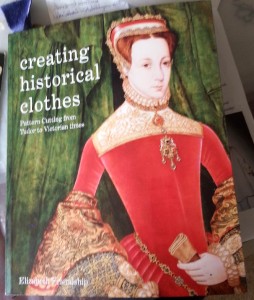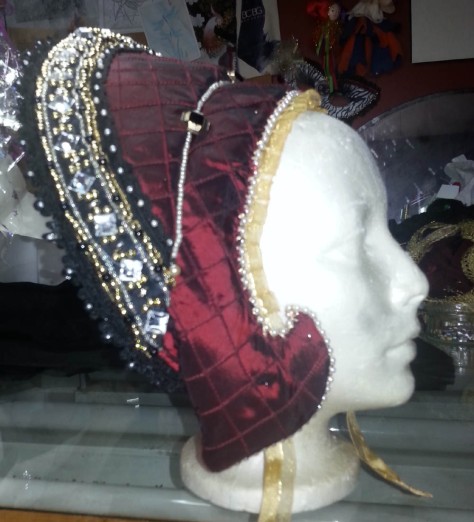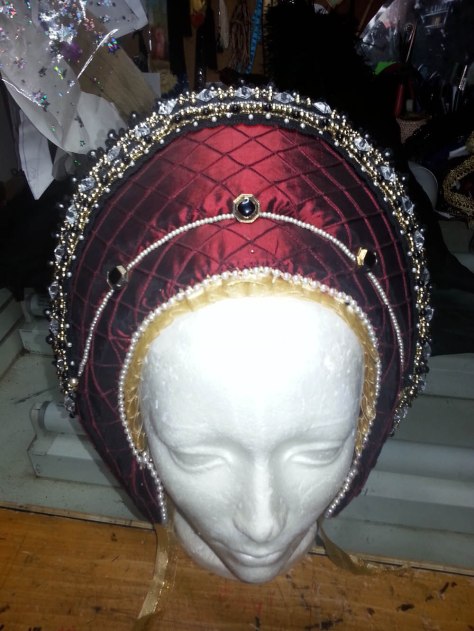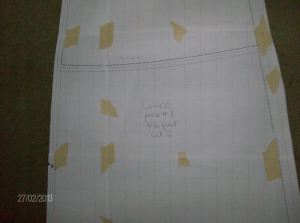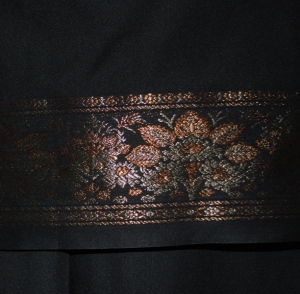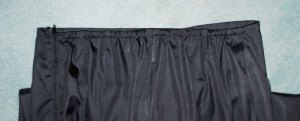It’s winter again. Today is Tuesday, and we have received over one foot of snow so far, at 14:00 hrs. Not a record-breaking amount, but a lot for us, since we had a completely green Christmas. I was actually gardening on Christmas day, in a t-shirt!!!
Last week ended with a deep freeze, so deep we lost the mercury on our thermometer. The coldest this thermometer drops to is -30 C. It has crept back up a little, only to land us in a very real snow storm. Not a raging, windy, howling and blustering storm. Only a constant, heavy fall of rather fine flakes, collecting on our window sills and everywhere else, high enough to prevent seeing out, is what we woke up to today. I dug out the seeds and other treats we put out for the birds and squirrels, but it got re-buried within 30 minutes. The crows are cawing and chatting… We are privileged to host 5 crows almost every day, at our feeding station!!!
But I am not here to talk about the birds or animals or the weather! I got rather busy last year with many projects. Some from the local Super Heroes group, others from the 501st, weddings and proms and finally quite a few personal things, such as my first ever, absolutely (looking) accurate Tudor gown and other costumes needed for our first visit to a Renaissance Fair in the U.S.A. My own Tudor outfit took very close to 300 hours. There was a lot of hand embroidery, as well as free-motion machine hand-controlled embroidery, beading and hand-couching and a lot of hand sewing to get it all together.
It looks like I am slipping into talking about that project, rather than talking about my K-Coats (which are what I intended to discuss!!!!!!). I also started making K-Coats last year. In fact I produced 34 of them!!! Some were commissioned, most were just coats I HAD to make!!! That was what I thought to write about today. So which shall it be?
I think that now that I have started, I will continue with the Tudor outfit. I am very proud of it. Since it takes a lot of room in the closet, Justin suggested we keep My Lady on her mannequin, in the living room, near the fireplace. A permanent exhibit of what I consider to be the apotheosis of my *making* career. I wore it only 4 hours. Maybe even not quite.
The whole RenFair experience was new to us. We were invited to join my friend and her husband at the Bristol, WI. Renaissance Fair. Then I invited another friend to come and she brought one daughter and a niece too!!! The Bristol Faire is considered to be the *best* RenFair in the country. Their time-frame is late Elizabethan. I chose late Tudor as our era for our costumes.
I could go into the whole story of how and why Tudor times have always been my favourite era in history. I think I may have touched upon that in a past entry of my blogging. If I haven’t, I will come back to that, later here, or in another blog.
There is so much goes into making a costume (or any piece of *meaningful* clothing). Especially for me. THIS Tudor costume has been decades in the desiring, thinking, preparing, envisioning, designing etc. and also collecting of fabrics and trims, embroideries, beads, gems and buttons. My use of burgundy for it is not surprising at all. In fact, burgundy has been a favourite of mine all my life, probably because of my love for Tudor costuming. I used silk for the outer, final layer of the garb. I made a pair of stays two years ago… in hope that one day they would be used within their proper context. I made the stays to go to the 5th Anniversary of the Ottawa Steampunk group’s gala. I was thinking ahead. There was a chance that I would be going to a RenFair in the next couple of years, so my corset for the Steampunk Gala was actually a Pair of Stays.

My reversible pair of stays. Note the blackwork embroidery at neckline and sleeve hems. All the ridges seen here smooth out very flat once I am wearing it.
I made the stays, with all their boning, and the outside layers in two silks: a red one, with black sketches of roses, for the inside and a pale blue heavier brocaded silk (bought in Shanghai!! The Mecca of silks!!!) for the outer layer. In fact, the stays were made to be reversible. So I could wear them red, or blue. I cheated in the end. I have made many corsets and gowns requiring lacing up at the back. I have worn many myself. This time, I decided, I would use a zipper (OOOOARGH!!! OH!!!! SHAME!!!) to make it easier to get on, if I had to do it alone. At the Fair, my friend pointed out that if I had put lacing on them, I could have reduced my silhouette by several inches. Perhaps. Yes, perhaps. But, (when I first made them), I wanted to be relatively comfortable… and Tudor stays, in any case, were not made to reduce the size of the wearer. They were made to force the body’s shape cylindrical. Not curvaceous. No emphasis on the chest size (eyebrows raising in a knowing way). In fact, the stays rather flatten the bust: they push it up, but do not reconfigure it. I didn’t really mind that I could have been 5 inches smaller. I was glad, actually, in the end, that the stays straightened and helped support my back, without forcing me smaller. It was a very hot and humid day (31C) in Bristol when I wore My Lady Tudor. I stayed in the shade most of the day… The first 2 hours were a rather precarious time, when I relied on my cane for stability and I was really fighting fainting from the heat… then I got used to it all, and spent another two hours parading about as if I had been born to that clothing!!!
My Lady Tudor is based on three or four paintings I finally chose to help design this gown.
I was determined to make it as accurate as can be. Some parts were made to *look* perfect. I didn’t make a separate placard. I made the bodice all in one, with folds in the fabric in strategic places, to make it look like there was a separate placard and I sewed on brass pin heads in the right places. In Tudor times, they preferred to cover the lacing up part, which was at the front, unlike the Victorians’ dresses and corsets, and they covered this lumpiness with a placard. Enhancing and further shaping the body into a cylinder. Not a shapely (eyebrows raising up and down) bosomed bodice. The bosom was pushed up. Some RenFair girls wear their stays WAY too tight (I felt) to REALLY do that push-up thing. I actually asked one or two of them in Bristol if it was painful having your breasts pushed up so high, you could rest your chin on them….. Apparently, it is not uncomfortable.
I digress again. Such is my mind. Wandering and remembering and commenting! The three paintings I used as reference guides were: the cover of the book which gave me the instructions and guidelines of all the parts I needed for the costume. This book is: *Creating Historical Clothes*. The painting is of a 16 year-old *woman* in 1565. I also used the painting of Princess Elizabeth, at age 13 or 14 (1546). Then there was a painting of Queen Katherin Parr, the one who out-lived King Henry VIII. But at the time of the painting she was simply a*Lady*, wife of Lord Latimer, but the depiction of her clothing was very instructional. Another painting which had good details and inspiration, was one of Queen Jane Seymour: the one who died of childbirth and is renowned to be Henry VIII’s *favourite* wife. Favourite only because she is the only one who bore him a son who survived early childhood… But that is a whole other story and subject to many thoughts of mine…. Not needed here!
All these dresses were red to burgundy, by the way! I got jewellery details and sewing details from all these paintings.
I looked for more books and more information… I eventually based all the details on these paintings and made what I hoped were correctly looking historical parts. When I strayed from *CORRECT*, it was only so I could get into this clothing on by myself. With very little help if required. That’s why the placard is included in the bodice’s design. Just one piece, yet it looks like two or more. Really. It does!!! I have had a lot of experience making historical clothing easy to make and put on, yet LOOK exactly right. Does not take away from the final costume!!!
There was the blackwork embroidered linen under-chemise. Then the under-skirt, then the *hoop skirt*, then the kirtle (or kyrtle), in two parts in my case. Then finally the over skirt comprised of the fore skirt, which is the flashy showy part of the skirt which is sewn to the rest of the skirt which is always hidden. The bodice was layered this way: chemise (well embroidered, in blackwork, at neck and sleeve hems), stays, kyrtle top, silk bodice top.
As big as I thought my bum roll turned out, it seems I still managed to make it smaller than many I have seen since. It feels cool though!! Then the various skirts and hooped parts. Then, FINALLY, the outer skirt. I found some beautiful burgundy silk at a second-hand shop. It was actually a brand new queen-size duvet cover, silk on BOTH sides, bed skirt and two king size pillow shams. All silk, all clean and new!!!!
The fore skirt had a very good pattern on it, but it needed some more pizazz…. So I over embroidered, free-hand machine embroidery, a good part of the gold in it. As it still needed *more*, I also added gold metallic trim which I decorated further with black satin soutache and eventually pearlized beads in various sizes and larger gemstones to it. This fabric also served as the under sleeves, which had slashes cut into them. The picture below shows the embellishments on the fabric for the over sleeves.

This is the main fabric for the fore skirt and the under sleeves. It required quite a bit of extra dazzle.

Here you can see the over sleeve, covered by the over fold, which was couched and beaded as well as black work added to give it more texture.
I made the French Hood too. There were many hours of beading in that!!! I was happy with the end result. I used a pattern for it, and although I reduced the size of it when I cut the first piece, after it was all done, the various layers of cotton and felt added some volume to it. I did sew the ties for it, which go under the neck, to help hold it up, but they drove me crazy in my fittings. So I altered it by adding a hair comb on the inside, to attach it to my hair. That was a good idea: it stayed on my head very comfortably that way and didn’t strangle me, the way the ties had done.
I also made my husband’s costume…. He had a few stipulations though: NO *bubble pants*, it must have matching fabric to mine, no silliness. How does one achieve *NO silliness* when reproducing a historic costume? They wore these clothes with absolute faith that these were what is right. The same way we do with all our trends and fancies today, in the 21st Century1!! And his costume adventures will be the subject of my next blog I think!!






